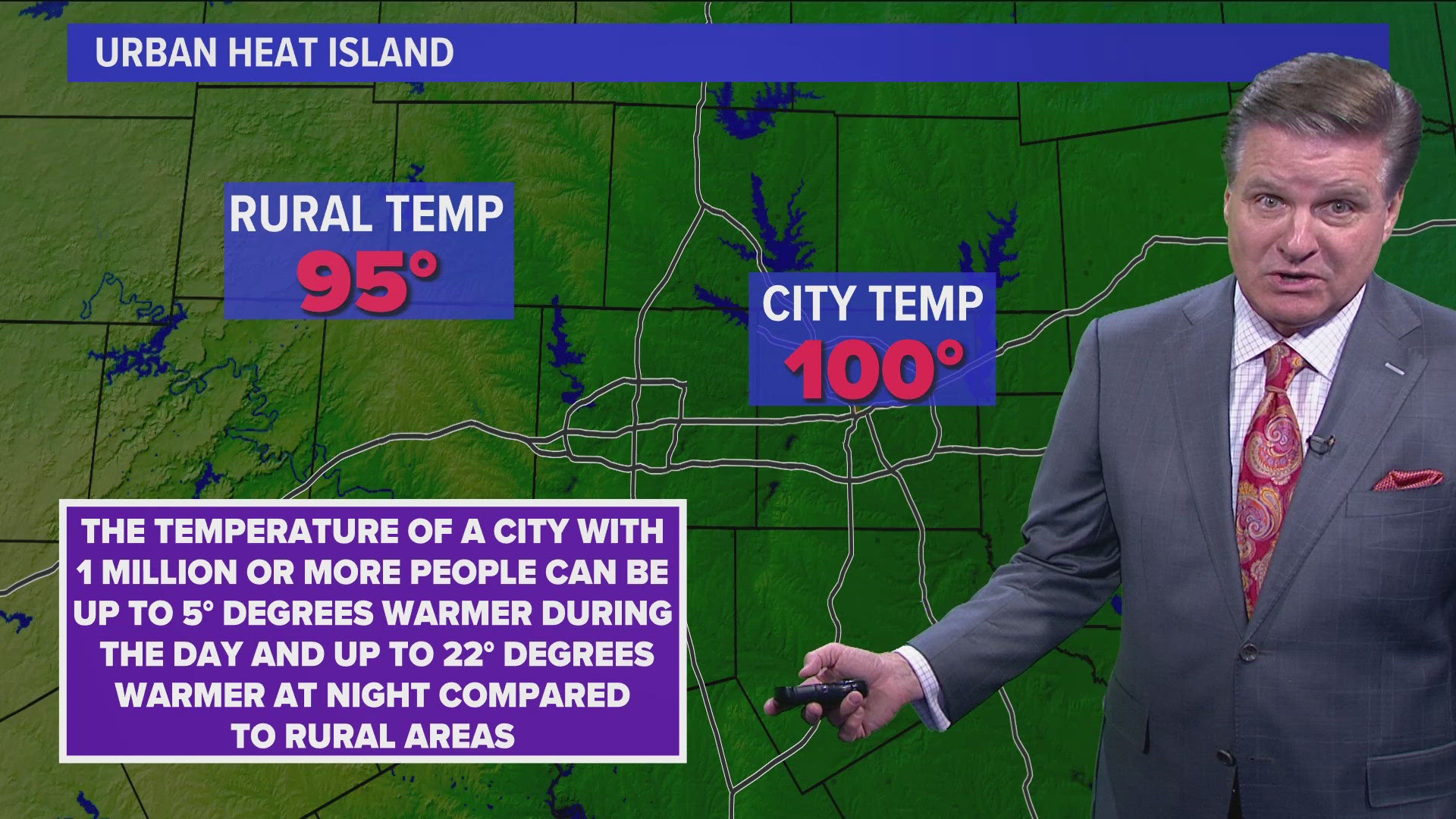DALLAS — Be sure to download the WFAA app to track the latest forecast and get alerts from our team.
Yes, it is summer. Yes, it is hot. Normal highs this time of the year are well into the 90s and will stay there until early September.
We pay a lot of attention to afternoon highs, but morning lows are also something to consider.
Warm Mornings
We know and expect afternoon temperatures to be brutal this time of the year. But when mornings are warm or the temp does not cool as much overnight, that makes it even harder on those without proper cooling and contributes to a higher A/C bill.
What causes these warmer mornings?
- Higher humidity - when the humidity is higher the temp struggles to drop as much overnight. When the air is drier, the temp can drop more at night. That's why nights in the desert can be comfortably cool.
- The Urban Heat Island - hot temps from the day before cause the heat to stick around in more urban environments vs. rural locations.
What is and what causes the Urban Heat Island?
Increase in impervious surfaces
Since 1990, the population of DFW has soared from just over 4 million to over 7.6 million according to the latest census in 2022.
The rise in population has led to an increase in demand for infrastructure to support the growth of the area. This led to the addition of 890 square miles, roughly the size of Dallas County, of impervious surfaces. Impervious surfaces are artificial surfaces like asphalt, concrete, brick, stone, or rooftops and buildings. Basically surfaces that are water resistant.
How does that affect temperature?
Impervious surfaces don't absorb water but are effective at absorbing heat during the day. Heat is released at a higher rate by these surfaces than by natural surfaces like soil and grass. This leads to higher air temperatures in the city vs in a rural area.
As a rule of thumb, temperatures run about five degrees warmer in the city than locations just outside of the city.
A study run by the US Environmental Protection Agency found that on a clear, calm night the temperature difference in a city vs its rural counterpart can be as high as 22 degrees.
This is because impervious surfaces absorb and store a lot of heat that will eventually be released well into the overnight hours. The heat that is released gets trapped near the surface because of the taller buildings.
Solutions
Urban heat islands were created due to a number of factors, so it'll take a few different factors to balance it out.
More green spaces throughout the city and the addition of different types of vegetation would be a helpful start. This would help regulate the heat being absorbed and released by different surfaces. The addition of vegetation would help reduce air temperature by adding moisture to the surrounding air.

